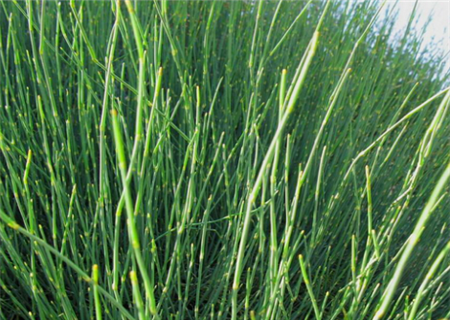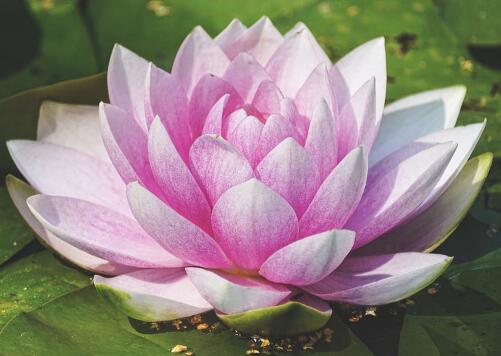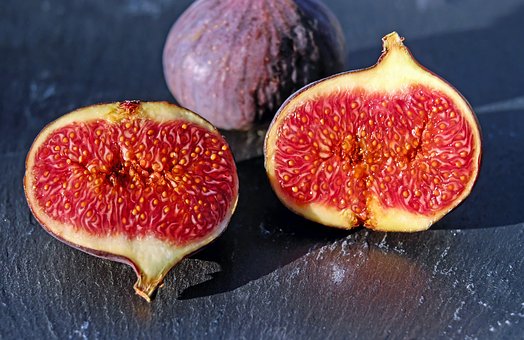What are the side effects of ephedra, a medicinal plant? Attached planting techniques and pharmacological uses
What are the side effects of ephedra?
Ephedra poisoning initially showed symptoms of central and sympathetic excitement, such as restlessness, nervousness, headache and dizziness, tinnitus and insomnia, nausea and vomiting, epigastric discomfort, thirst and sweating, elevated blood pressure, dilated pupils, palpitation, shortness of breath, precordial pain, severe dysuria, blurred vision, shock, coma, dyspnea, and finally died of respiratory failure and ventricular fibrillation. At the same time, long-term use of ephedra can be addictive.
II. The efficacy and function of Ephedra
1. It is used for external cold, cold and fever, head and body pain, stuffy nose, no sweating, pulse floating and tight, etc. This product can relieve the lung qi, open the stomach, disperse the wind and cold, and relieve the surface with perspiration. It is often used with cassia twig to enhance the power of sweating, such as ephedra soup.

2. It is used for the syndrome of wheezing and coughing caused by wind-cold external bundle and lung qi repression. It can release lung qi, disperse wind, cold and relieve asthma. Compatibility with almonds and licorice, that is, Sanao decoction, can enhance the antiasthmatic effect; if there is cold drink, it can be combined with Asarum, dried ginger, Pinellia ternata, etc., to warm cold drink and relieve asthma and cough, such as Xiaoqinglong decoction; if it is caused by asthma caused by heat evil obstructing the lungs, it can be combined with gypsum, almonds and licorice to clear the lungs and relieve asthma, that is, Ma Xing Shigan decoction.
3. For edema and exterior syndrome, it is an important medicine for lung diuresis. This product is sweating and diuresis, which helps to dissipate edema. It is often used with ginger and Atractylodes macrocephala, such as Yue maidservant plus Shu Tang.
4. The effect of warming and dispelling cold pathogen of ephedra, combined with other corresponding drugs, can treat rheumatism, arthralgia, gangrene, phlegm and other syndrome.
III. Pharmacological uses of Ephedra
1, for edema and surface syndrome, ephedra can be used as a good medicine for lung diuresis, can sweat and diuresis, help to dissipate edema, often used with ginger, Atractylodes macrocephala, such as Yue maidservant plus Shu Tang, is very suitable for patients with edema to take, the treatment effect is very ideal.
2. Warming and dispelling cold pathogen, combined with other corresponding drugs, can treat rheumatism, arthralgia, gangrene, phlegm and other syndrome. Compatible with cooked land, cinnamon, white mustard seeds, such as Yanghe decoction. Taking this product can warm away cold evil.
3. It has significant curative effect on some external empirical evidence, such as exogenous wind chill, aversion to cold and fever, head and body pain, stuffy nose, no sweating, pulse floating and tight, etc. The product can relieve the lung qi, open the stomach, disperse the wind and cold, and relieve the surface with perspiration. It is often used with cassia twig to enhance the power of sweating, such as ephedra soup.
4. Syndrome of wheezing and coughing caused by external wind-cold and lung qi choking. It can release lung qi, disperse wind, cold and relieve asthma. Compatibility with almonds and licorice, that is, Sanao decoction, can enhance the antiasthmatic effect; if there is cold drink, it can be combined with Asarum, dried ginger, Pinellia ternata, etc., to warm cold drink and relieve asthma and cough, such as Xiaoqinglong decoction; if it is caused by asthma caused by heat evil obstructing the lungs, then you can choose to combine ephedra with gypsum, almonds and licorice to clear the lungs and relieve asthma, that is, Ma Xing Shigan decoction. People with cough and asthma can choose to take this prescription for improvement, and the effect is very good.
IV. Planting techniques of Ephedra
1. Variety selection
There are many varieties of ephedra, about a dozen, but the most widely planted is Middle Ephedra. Its output and quality are very good. Many pharmaceutical factories and manufacturers prefer to purchase Chinese Ephedra. Therefore, both the price and sales channels of Ephedra are guaranteed, followed by Equisetum equisetifolia and Ephedra equisetifolia. Of course, you can make a choice according to your area. It depends on whether to choose drought-resistant or disease-resistant or cold-resistant.
2. Soil preparation and fertilization
Ephedra planting will generally be selected in the deep land with relatively complete soil structure, its permeability is very strong, and the drainage system is perfect, it is best to choose the area close to the water source, so it is convenient for drainage and irrigation, and the land should not choose clayey soil as far as possible. this permeability is not good, not suitable for the growth of ephedra, the soil needs to be refined when preparing the soil, and if possible, turn the land as deep as possible. Finally, when applying sufficient basic fertilizer during land preparation, an average of 4,000 to 5,000 jin of farm manure is needed per mu of land, and about 40 jin of nitrogen fertilizer and 40 jin of potash fertilizer are mixed and scattered evenly in the field.
3. Sowing and raising seedlings
Ephedra seeds are very expensive, so you must be careful when sowing, otherwise sprouting failure is so serious, so we will do corresponding seed treatment before sowing. First, we soak ephedra in warm water of about 30 degrees for three or four hours, and then soak it in Yumaoling solution for about two hours, in order to enhance the resistance of Ephedra. We can stir the seeds with some chemicals at this time, then mix them with a layer of sand and put them at the right temperature to germinate. After three days, most of the seeds will have sprouted white, and then they can be sown. When sowing, we can use hole sowing or strip sowing, the distance between each plant is about 25 cm, the distance between each row is about 30 cm, sprinkle the seeds evenly on the whole ground, and then cover the seeds with thin soil.
4. Field management
The first step in field management is to check whether intercropping and replenishing seedlings are needed. We can pull out only three or four trees where there are more seeds in the field, and then fill the seedlings to a sparse place where they grow. When the seedlings of Ephedra grow to five or six centimeters, we can carry out the first intermediate ploughing and weeding. Because there are more weeds in the growth process of Ephedra, in order not to affect the yield, we have to carry out timely weeding. Then apply 1000 jin of farm manure, 500 jin of urea and 50 jin of phosphate fertilizer to cultivate the soil, and then irrigate it. When there is a relatively heavy rainfall season, we need to go to the field in time to dredge the ditch and then lead Rain Water out. The second fertilization is when ephedra blossoms, which is to promote flowering, but also to let it bear more fruit, so that it will collect a little more seeds. The last is to promote fruit growth, generally using 500 jin of phosphate fertilizer, 50 jin of potash fertilizer and 40 jin of boron fertilizer.
5. Disease control
The common diseases and insect pests of ephedra are standing blight and quenching disease. for standing blight, chlorothalonil is generally sprayed every six to ten days, and it will basically be cured after two or three times. if we had done seed treatment during sowing, it would not have happened, but just in case, we should carefully observe the growth changes of the plant, and then we can spray chlorovir to control it. Ephedra sometimes has some insect pests, such as aphids and inchworms, which can generally be sprayed with dimethoate milk. If it is more serious, it must be sprayed several times to alleviate the disease.
6. Timely harvest
The best growing period of ephedra can be said to be in June, so our harvest time is usually in September. Because ephedra can grow for many years, the way to harvest is to cut off the stem on the ground with a sickle, then clean the sediment from the stem, cut it into small sections to dry, and finally pack it.
Time: 2019-04-07 Click:
- Prev

"Goddess in the water" can water lilies be raised in full water? How can it blossom? Only these three moves are needed!
Water lily is a more common kind of flower cultivation, often known as the goddess in the water, belongs to aquatic plants, so when raising must rely on water. The flowering time of water lilies is different from that of other plants. It blossoms at night. So can water lilies be raised in full water? How to raise it to produce beautiful flowers? Brief introduction of water lilies
- Next

Fig potted planting technique: what kind of variety is good? How can it bear fruit? If you master these points, you can grow easily.
Figs, also known as milk berries, honey fruits, asparagus fruits, etc., are a kind of fruit with anti-cancer effect, which is very suitable for planting in the courtyard and balcony, and will bear fruit all over the branches after flowering. Which variety of potted figs is good? How can it bear fruit? What is a good variety of potted figs?
Related
- Fuxing push coffee new agricultural production and marketing class: lack of small-scale processing plants
- Jujube rice field leisure farm deep ploughing Yilan for five years to create a space for organic food and play
- Nongyu Farm-A trial of organic papaya for brave women with advanced technology
- Four points for attention in the prevention and control of diseases and insect pests of edible fungi
- How to add nutrient solution to Edible Fungi
- Is there any good way to control edible fungus mites?
- Open Inoculation Technology of Edible Fungi
- Is there any clever way to use fertilizer for edible fungus in winter?
- What agents are used to kill the pathogens of edible fungi in the mushroom shed?
- Rapid drying of Edible Fungi

